Quartz, an irreplaceable time management and task scheduling library in Java applications, is widely favored by developers for its unique functions and flexibility. Named after "quartz", Quartz not only symbolizes the accuracy of time, but also reflects its core position in the field of task scheduling. This article will provide an in-depth analysis of the internal working principles and best practices of Quartz to help developers better understand and use this powerful library.
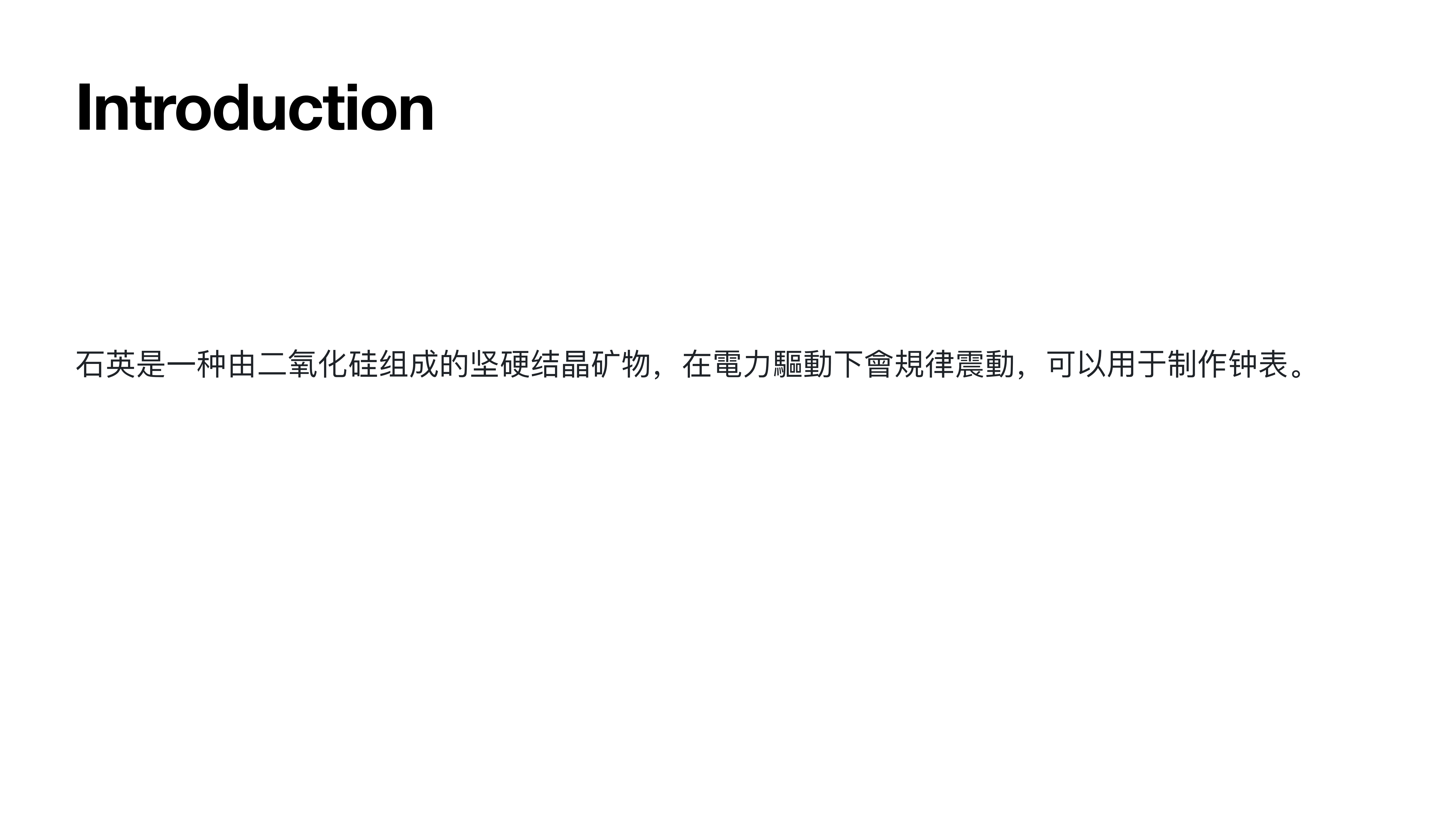
Quartz core features
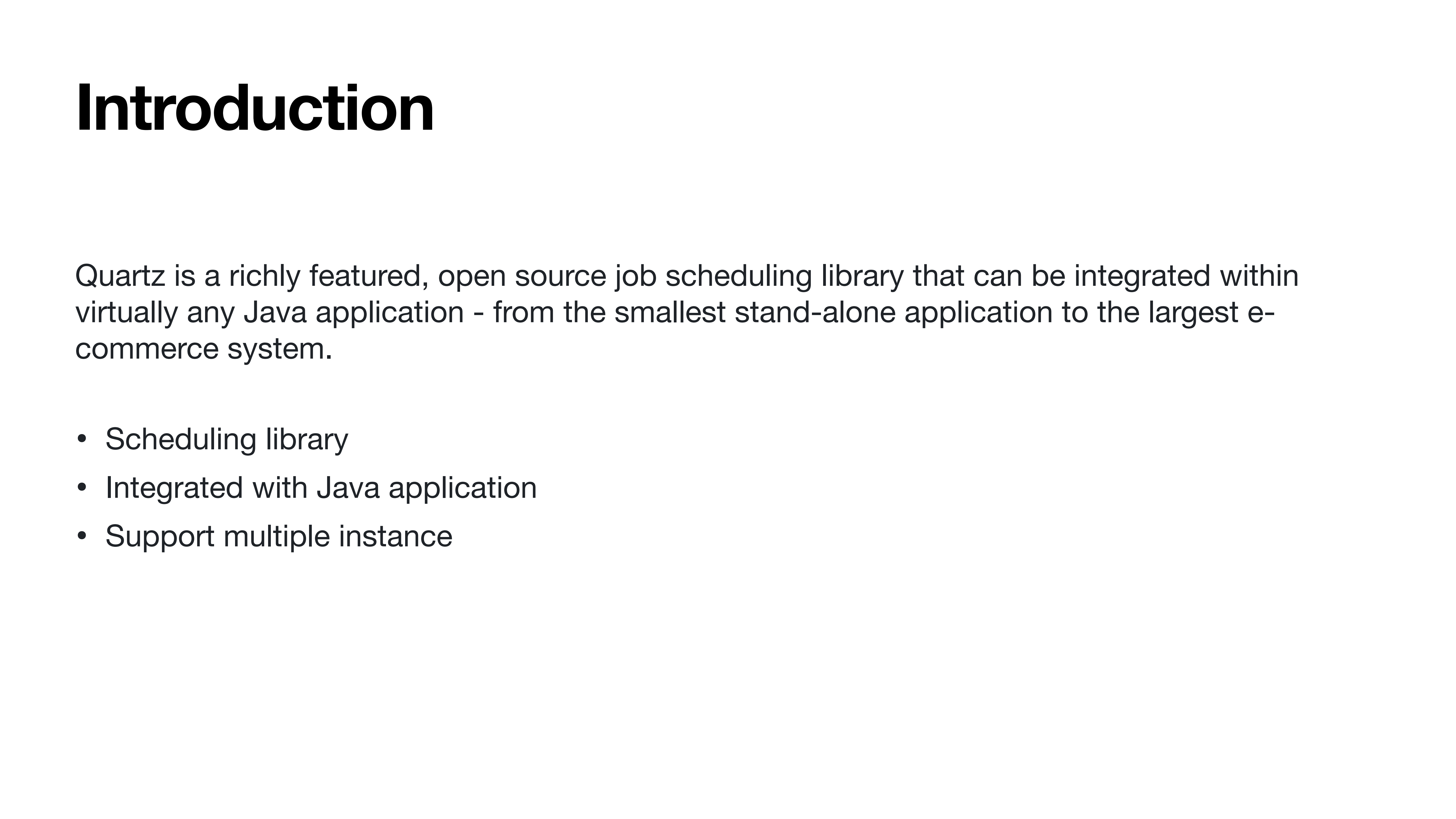
Identity as a library
Unlike independently deployed applications, Quartz exists in the form of a library and can be easily embedded into any Java application.
Designed specifically for Java
As a library written in pure Java, Quartz specifically serves the Java ecosystem and integrates with Java applications seamlessly and efficiently.
Flexible deployment capabilities
From stand-alone applications to large-scale distributed systems, Quartz can provide stable task scheduling support.
low dependency
Quartz's design focuses on independence and has almost no dependence on external frameworks or libraries, ensuring its high degree of self-sufficiency.
Quartz implementation mechanism
key components
- Job : Represents the task itself, including task name, group and its specific execution logic.
- Trigger : Define task triggering rules, such as execution frequency and conditions.
- Scheduler : Scheduler, responsible for scheduling and executing jobs.
manual
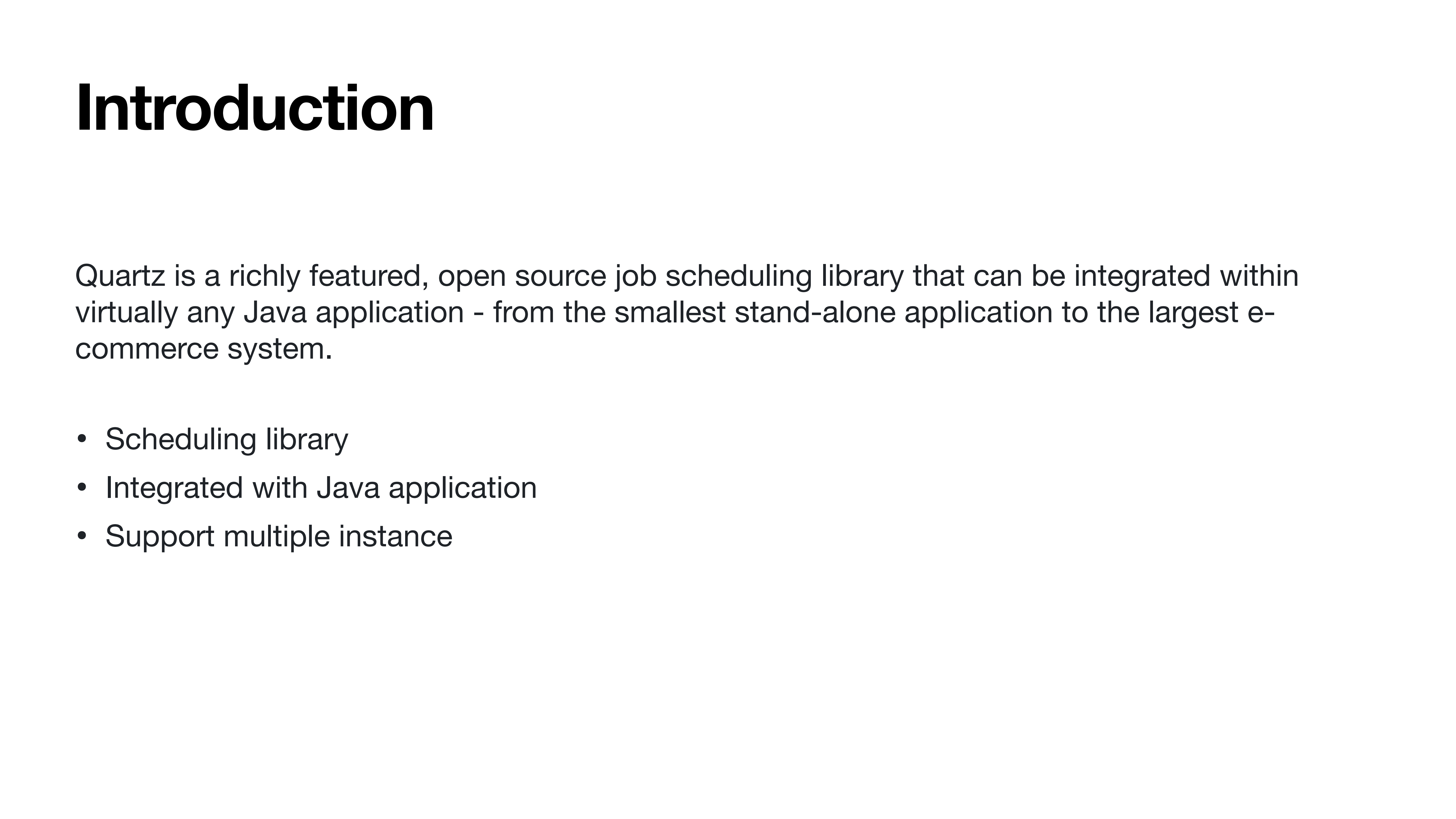
- Create Scheduler : Initialize Scheduler instance through factory method.
- Configuration task : Configure the Job and the corresponding Trigger into the Scheduler.
- Start Scheduler : Activate Scheduler to start task execution.
Special Note
Although an unstarted Scheduler does not perform tasks, its internal threads will continue to poll, which is a careful consideration in its design.
Integration with SpringBoot
In the SpringBoot environment, Quartz shows higher flexibility and convenience:
- Parameter passing method : In the Spring environment, Quartz's Job can not only receive parameters through Map, but also directly inject objects managed by the Spring container.
- Task scheduling flexibility : Supports multiple Trigger configurations to achieve various scheduling needs from simple to complex.
Overall, Quartz brings powerful and flexible task scheduling capabilities to Java applications, whether it is a simple single task or a complex distributed scheduled task, it can easily handle it.
Advanced features
Corn Trigger
Corn Trigger, which is widely used by Quartz, allows complex scheduling rules to be defined through Cron expressions to achieve refined task scheduling. This flexibility makes Quartz the tool of choice for handling scheduled tasks.
calendar trigger
In addition to Corn Trigger, Quartz also supports calendar-based triggers, providing more diverse scheduling options to meet specific time scheduling needs.
Trigger and job dependencies
In Quartz, the relationship between triggers and jobs is the core design. A common design pattern is a one-to-one relationship, where one Trigger corresponds to one Job. This design simplifies scheduling logic and improves fault tolerance.
Cluster support
Quartz improves execution efficiency through cluster support, especially in large-scale application scenarios. Cluster mode allows multiple application instances to participate in task scheduling and optimize resource utilization.
Quartz architecture
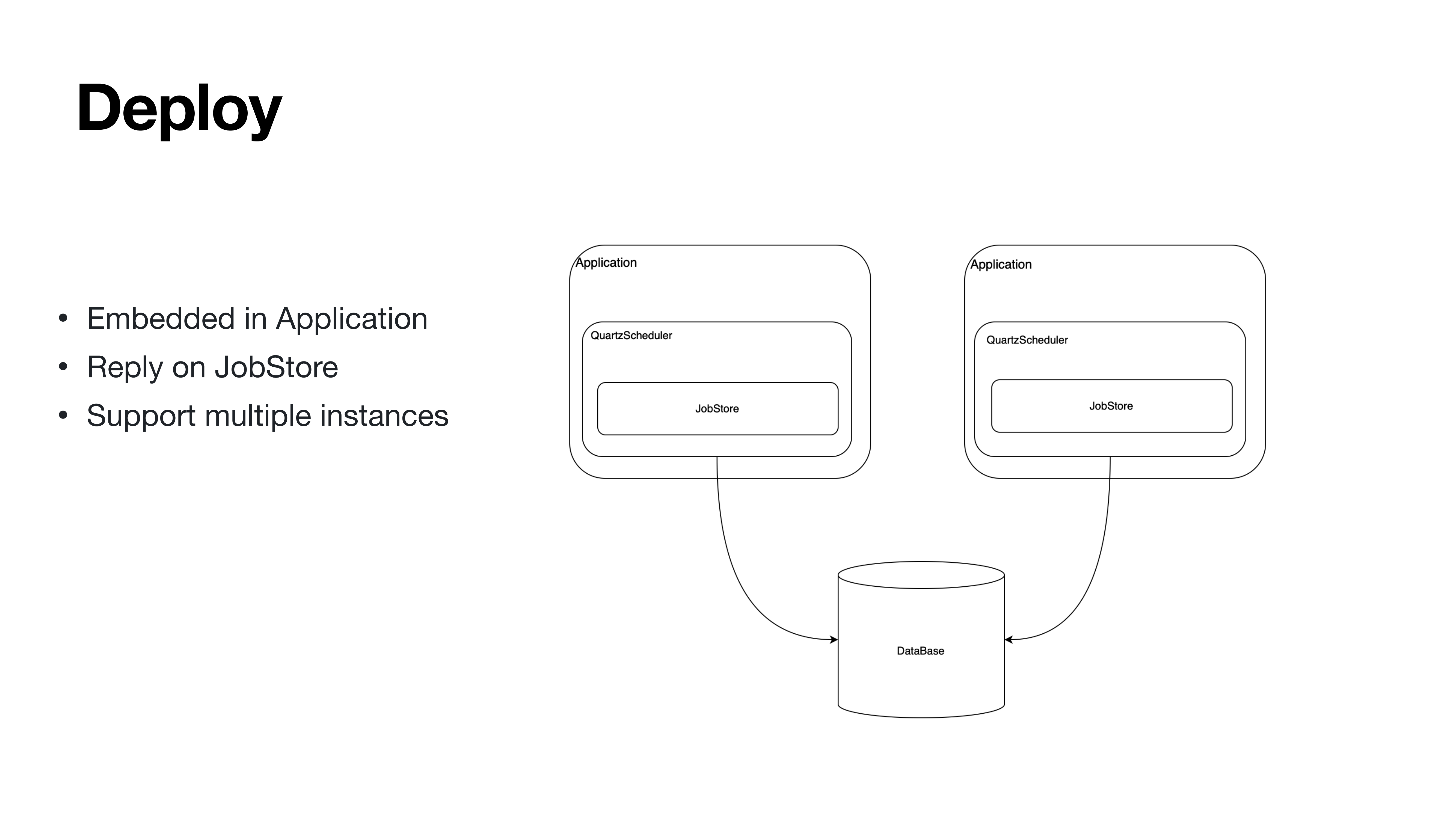
Deployment model
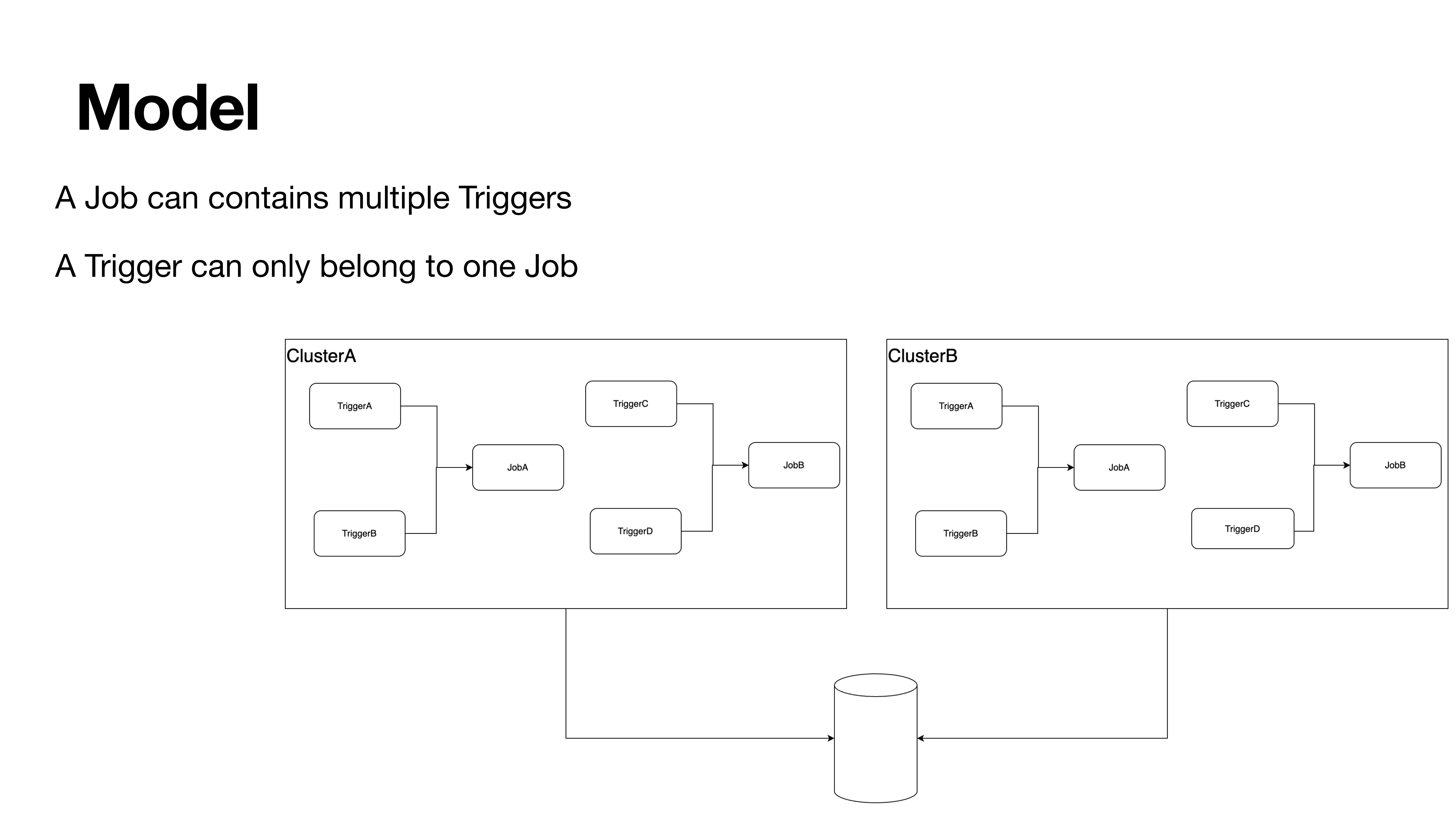
Quartz is designed as an embedded library and can be easily integrated into Java applications. Its core relies on Job Store and supports multi-instance deployment.
core module
Quartz's code structure is simple, mainly composed of core modules and a small number of extension modules. The core module not only has a moderate amount of code, but is also maintained by dedicated personnel to ensure code quality and consistency.
listener
Quartz provides two types of listeners: job listeners and scheduler listeners. These listeners can call back status changes, such as job execution and scheduler status, to facilitate external monitoring and logging.
architectural components
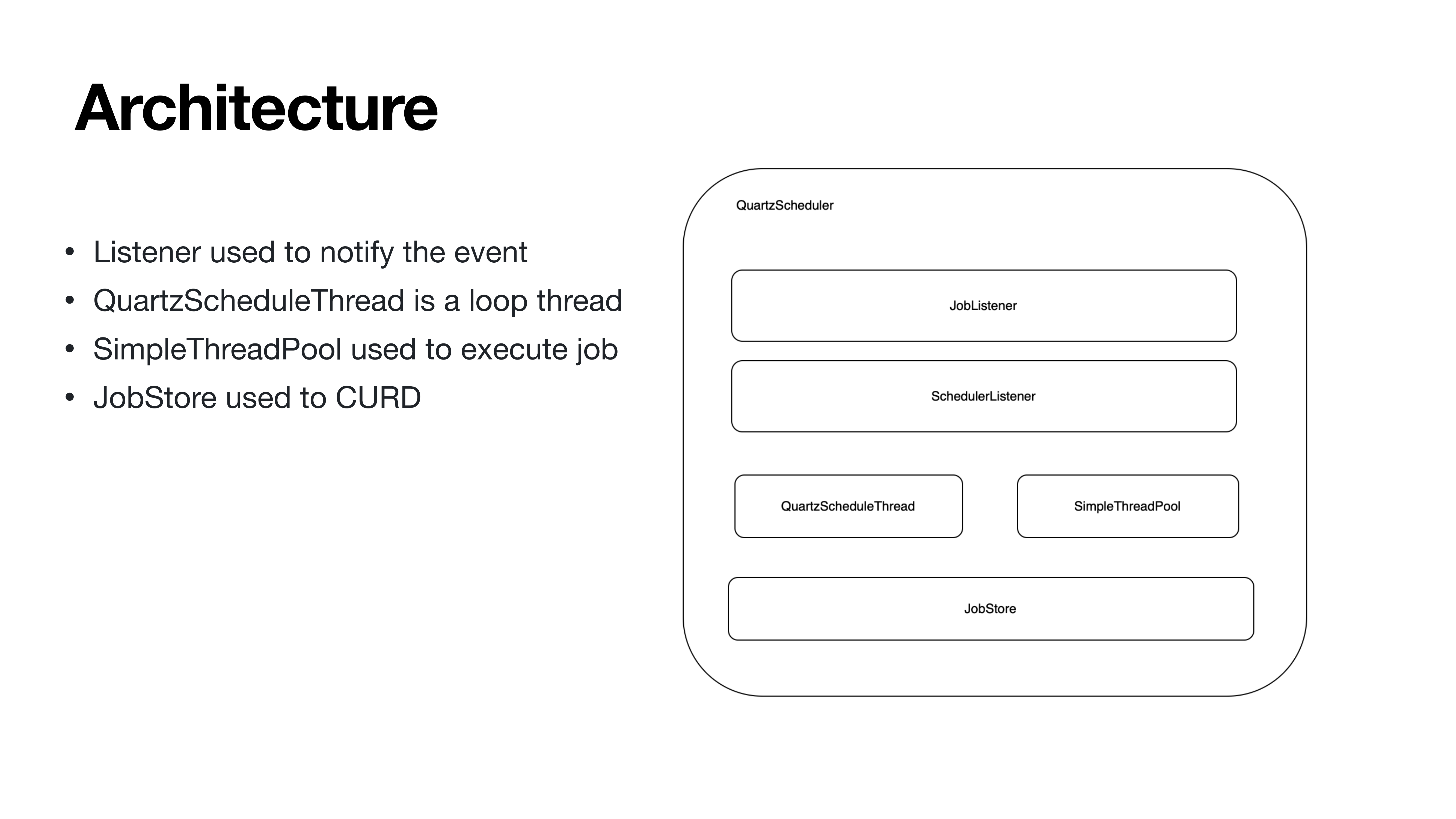
The architecture of Quartz can be divided into the following main parts:
- Listeners : used to monitor status changes of jobs and schedulers.
- Scheduler : The scheduler is the heart of Quartz and is responsible for task scheduling and execution.
- Triggers : Define the triggering rules for tasks.
- Jobs : Represents specific task implementation.
- Job Stores : Stores job and trigger information.
Through these components, Quartz can provide flexible and powerful task scheduling solutions to adapt to various business scenarios from simple to complex.
core class
QuartzSchedulerThread
QuartzSchedulerThread is the heart of Quartz and is responsible for polling the database to find the currently executable Trigger. Since the database itself does not actively push data, Quartz uses a pull method, that is, periodically querying the database to determine the timing of task execution.
SimpleThreadPool
SimpleThreadPool is Quartz's thread pool implementation, used to execute Jobs. Unlike common thread pools, it has no waiting queue. The size of the thread pool directly determines the number of tasks that can be executed in parallel. If all threads are busy, the new Trigger must wait until there is an idle thread.
Working Mechanism
Trigger and job relationship
In Quartz, the relationship between Trigger and Job is one-to-one. A Trigger can only correspond to one Job, and a Job can have multiple Triggers. This design simplifies the scheduling process and ensures system fault tolerance.
cluster mode
Quartz's cluster mode is designed to improve task execution efficiency. Through database locks, it is guaranteed that only one instance can access a specific Trigger at the same time. This mechanism shows its advantages when the system is large-scale. Through cluster deployment, different instances can process tasks in parallel.
Trigger state handling
The processing of Trigger status is a key link in the Quartz scheduling process. Once a Trigger is triggered, it is marked as "Acquired" and a Trigger instance is generated to indicate that the task is being executed. After the task is completed, the instance will be deleted, making it impossible to track historical execution records.
Scheduling process
Step 1: Trigger retrieval

First, Quartz will query the database to determine the currently executable Trigger list. This step involves complex SQL queries, taking into account execution time and status.
Step 2: Trigger handling
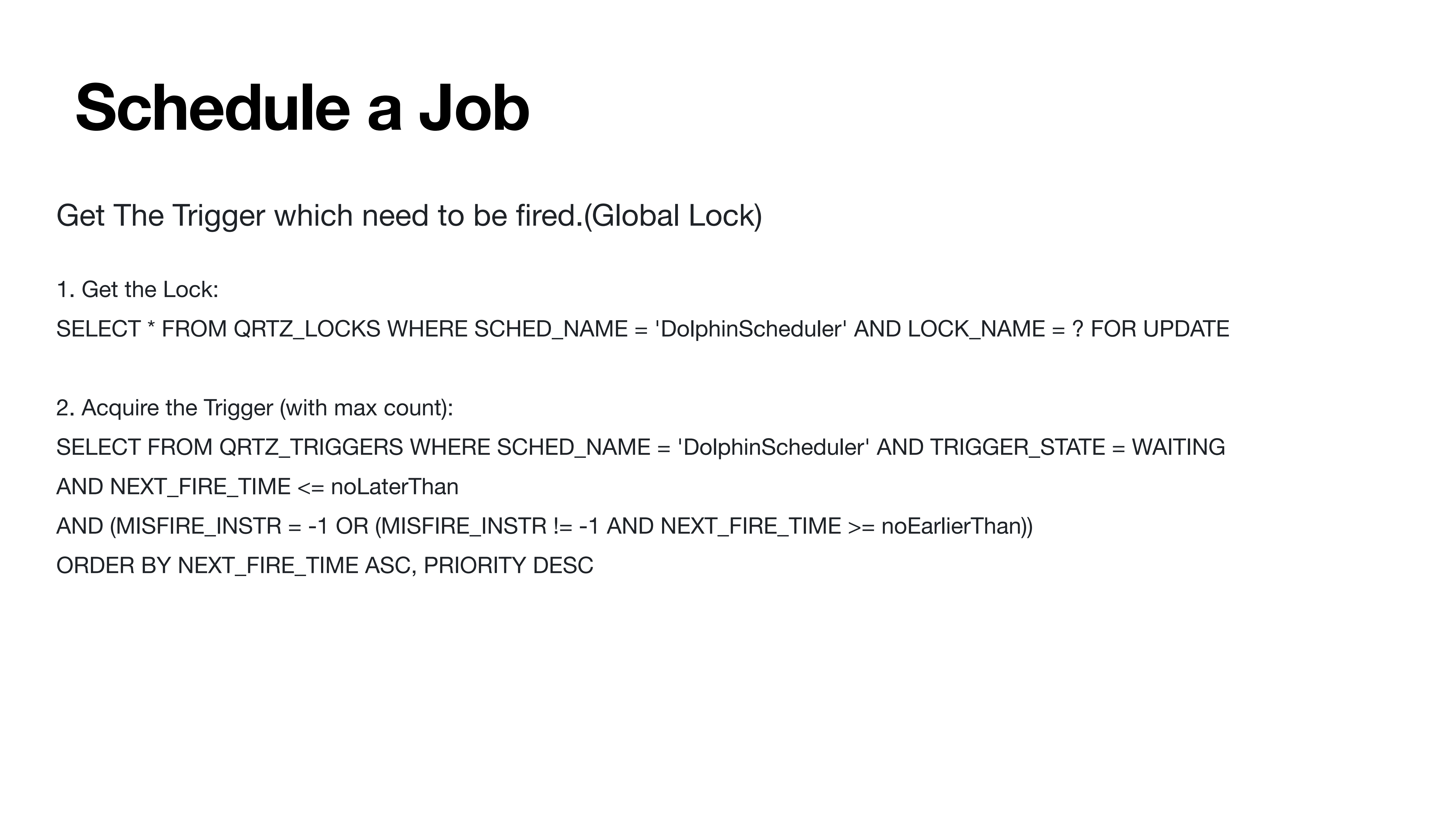
The processing steps include setting the Trigger status to "acquired" and creating the corresponding Trigger instance in the database.
Step 3: Task execution
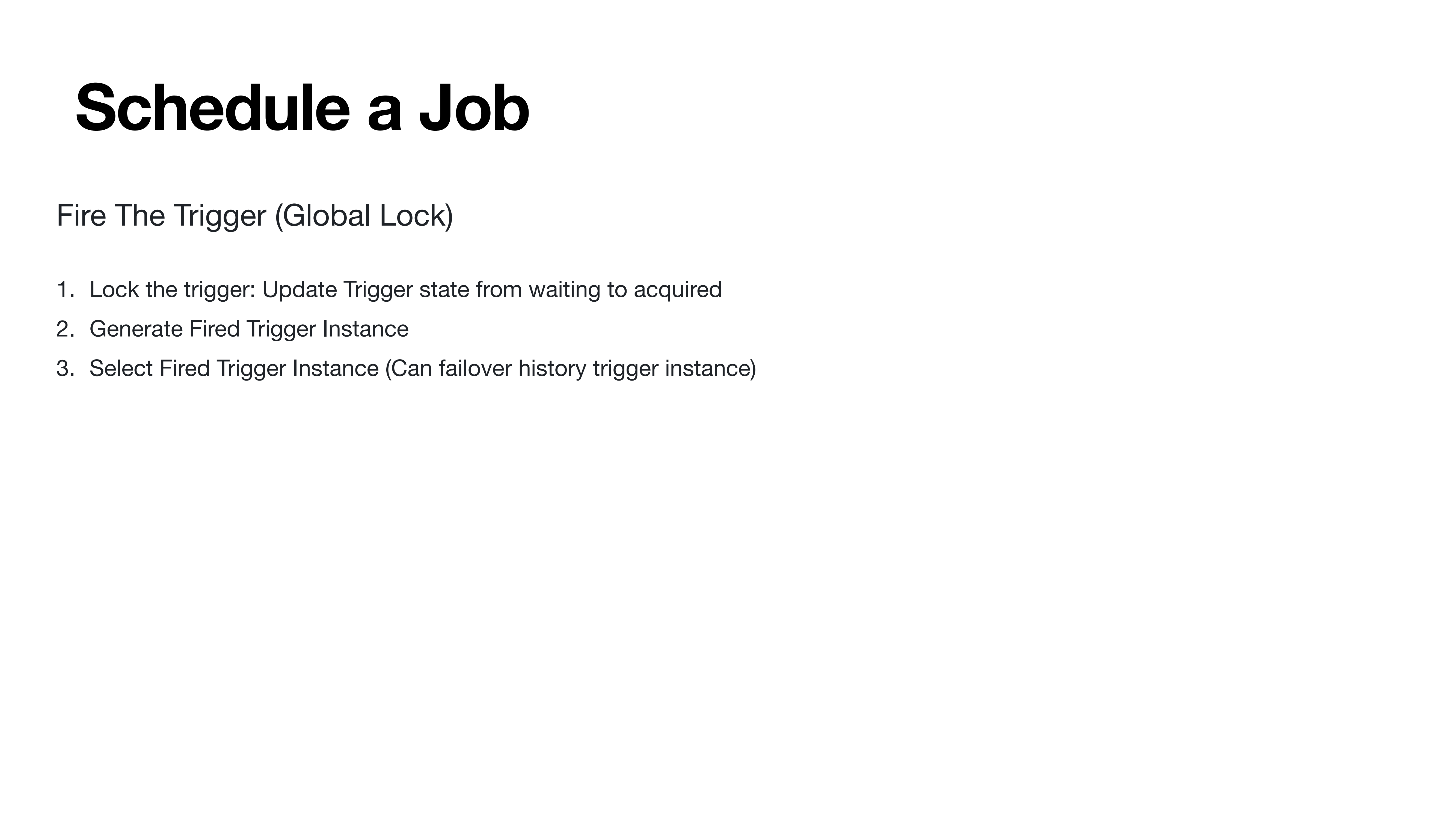
Submit the Job associated with the Trigger to the thread pool for execution.
Step 4: Trigger instance cleanup

After the task execution is completed, the corresponding Trigger instance will be deleted, which means that the historical execution of the task cannot be traced from the database.
Summarize
Quartz's core classes and working mechanisms together form an efficient and flexible task scheduling system. Although Quartz was designed with simplicity and performance in mind, its exact implementation details and architectural choices demonstrate its powerful ability to handle complex task scheduling scenarios.
In general, Quartz, as an expert in time management and task scheduling in Java, provides a comprehensive and efficient solution to deal with various complex scheduling needs. Its flexible configuration options, seamless integration with SpringBoot, and powerful cluster support make it unique in the field of task scheduling in Java applications. For Java developers who want to improve application efficiency, optimize resource allocation, and expand application functions, mastering the use of Quartz is undoubtedly a key step to improve development capabilities.
Tang Xiaoou, founder of SenseTime, passed away at the age of 55. In 2023, PHP stagnated . Hongmeng system is about to become independent, and many universities have set up "Hongmeng classes". The PC version of Quark Browser has started internal testing. ByteDance was "banned" by OpenAI. Zhihuijun's startup company refinanced, with an amount of over 600 million yuan, and a pre-money valuation of 3.5 billion yuan. AI code assistants are so popular that they can't even compete in the programming language rankings . Mate 60 Pro's 5G modem and radio frequency technology are far ahead No Star, No Fix MariaDB spins off SkySQL and forms as independent companyThis article is published by Beluga Open Source Technology !
